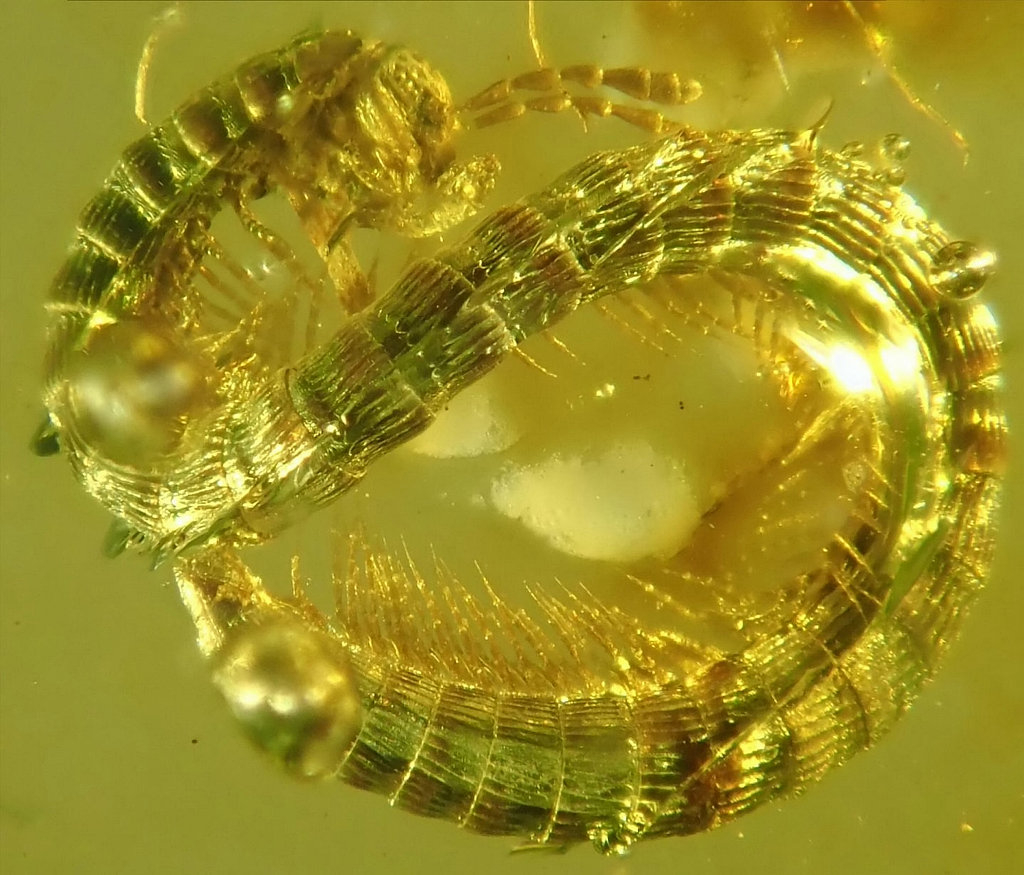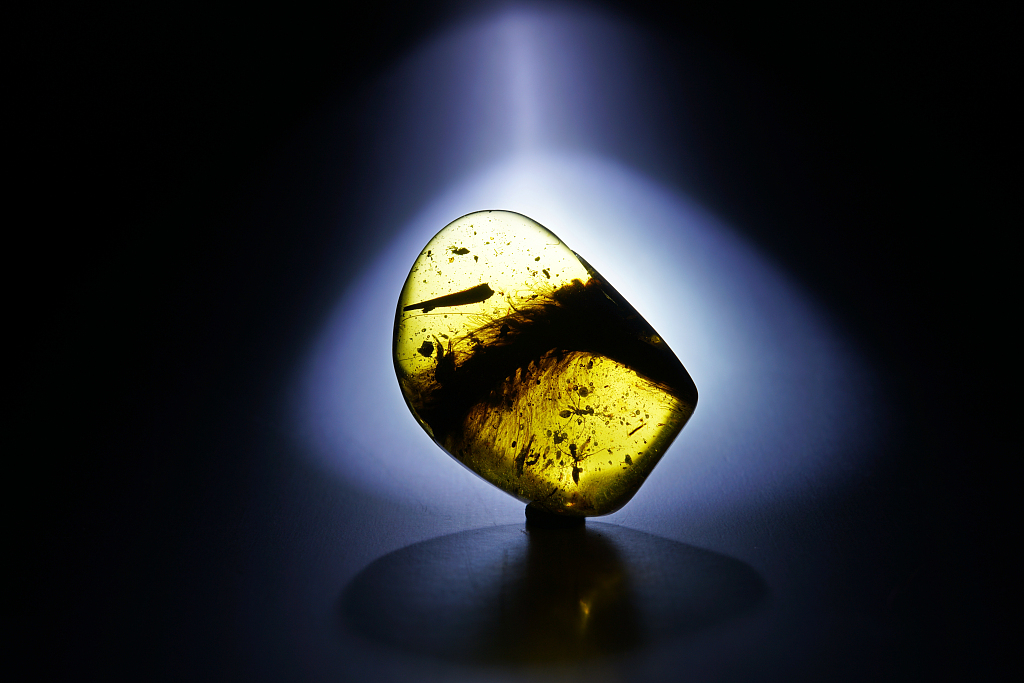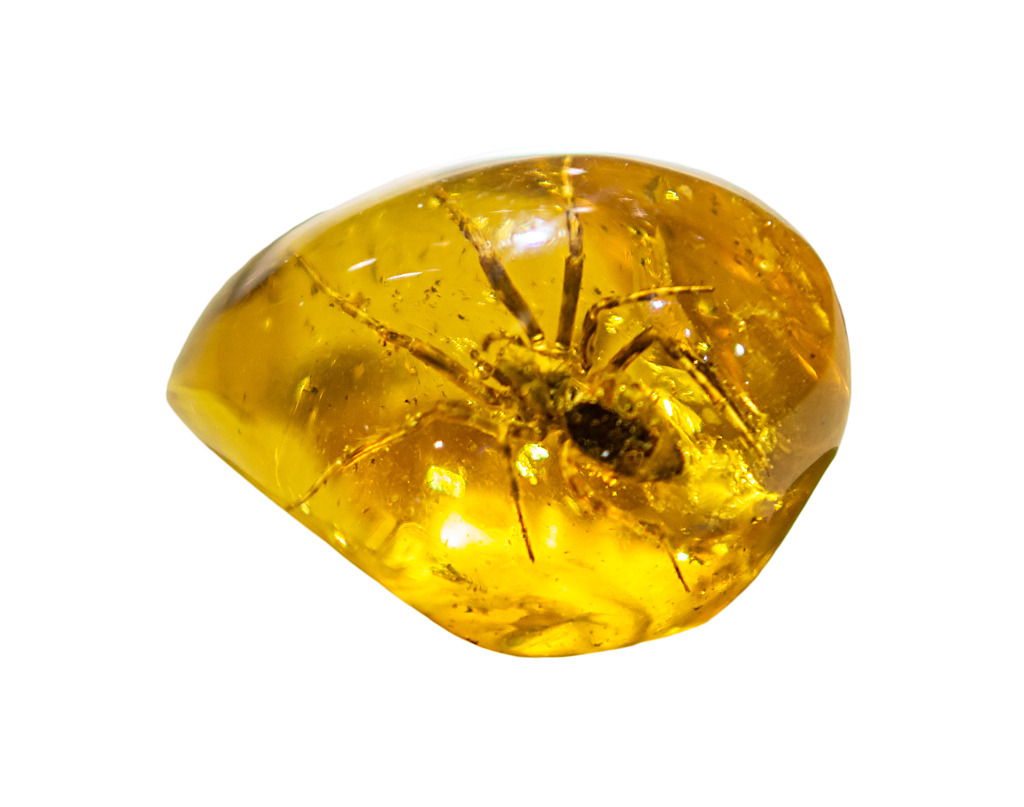Speaking of miracles made by nature, amber must have a say, as every part of it - from its creation to its preservation - is astounding.

An ancient millipede worm sealed in the amber. /VCG Photo
An ancient millipede worm sealed in the amber. /VCG Photo
Amber is fossilized tree resin that sometimes contains small animal bodies and plant materials. The honey-colored crystal-like resin wraps and freezes the elements, creating chances for people to take a close look of the inside world.

An amber with an insect in it. /VCG Photo
An amber with an insect in it. /VCG Photo
Many people consider amber to be a jewel instead of a fossil. The fossil is the remains, the impressions or trace of a living thing from a former geologic age. By analyzing fossils, scientists could learn about the characteristics of the pre-historic lives, and get plenty of information about the evolution and extinction of species which help in the fields of archaeology, zoology, botany and geology.

The feather in this amber is believed to belong to a type of small dinasour. /VCG Photo
The feather in this amber is believed to belong to a type of small dinasour. /VCG Photo
The forming process of amber depends on many factors, and one of the most important factors is the exact time. First, there had to be a coniferous tree that produced the sticky and thick resin in the early Tertiary Period (about 70 million years ago). Then, there had to be organisms (like an insect, a part of a plant etc.) which dropped into the resin.

Resin produced by a tree. /VCG Photo
Resin produced by a tree. /VCG Photo
As the resin with the organism was still vulnerable and could be easily damaged by the environment, it had to be buried either deep in the sea, or far under the ground. Having been buried for more than 25 million years, the surface of the resin could be completely petrified, and became the amber that we see today.

A spider in an amber. /VCG Photo
A spider in an amber. /VCG Photo
To conclude, the process of how amber is formed is so fragile that each glance is an appreciation of one of the most beautiful miracles of nature.
(Cover image via VCG)
(If you want to contribute and have specific expertise, please contact us at nature@cgtn.com)